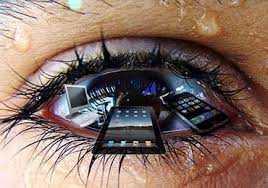
Kibo Robotics: STEM in early childhood.
Only 12 percent of engineers in the U.S are women. That’s right, ONLY 12. Women actually make up 26 percent of the workforce, but that number has decreased from 35 percent in 1990. For some reason, the U.S faces this ongoing issue of encouraging women to join STEM and actually keeping them in that field.
It’s no surprise that discrimination, sexism, and other factors deter many women from joining this field. Our society, since the beginning of time, has placed gender stereotypes, for example, that boys enjoy building things more than girls. Many teachers in the U.S also spend more time focusing on teaching math and science to boys rather than girls.
However, robots could be the smoking gun we needed all along to get more girls/women into the STEM field. Specifically, robot kits for kids. These kits are simple yet influential toys for teaching kids how to engineer and code. Because of this prolonged stereotype and jaw-dropping statistics, there are more toys targeted at getting kids interested in science and math. However, some of these toys are STILL gendered specific. For example, “Roominate” is a building kit targeted for girls and teaches them to code. Toy companies/marketers still have the connotation that a girl would not be interested in a toy if it wasn’t pink or purple and that’s not always the case.
Amanda Sullivan, who works in human development at Tufts University decided to test the effects of a non-gendered robotics kit called “Kibo.” Kids can program the rolling robot by stringing together blocks that denote specific commands. It isn’t necessarily marketed specifically to boys or girls using the traditional and stereotypical markings of maleness or femaleness.
Before playing with Kibo, boys were significantly more likely to say they’d enjoy being an engineer than girls. However, this shifted after both parties played with Kibo and the girls equally expressed engineering as interest as the boys. Unfortunately, just because a gender-neutral robotics kit can get grab girls attention, this doesn’t mean it will sell well. This is probably because there are many parents who still give into the gender stereotypes and prefer to buy their daughter a doll rather than a robotics kit.
Still, companies are designing a new line of toys in groundbreaking ways. More and more companies are taking note and are testing out gender-neutral products.
This was such a fun article to read! I’m not in STEM myself, on the contrary I’m actually on the opposite end of the spectrum and in the Communications school. However, I do notice the lack of women in STEM and it’s sad. I’m glad companies are starting to realize that toys don’t need to be purple and pink for girls and blue and green for boys. Why place that unnecessary pressure on a child? They’re going to feel obligated to pick out something with those colors based on their gender and what they see their friends playing with. Women can contribute so much to science, technology, and mathematics. I can only hope that many parents will break out of the traditional mindset of girls should play with dolls and boys should just build, be destructive, etc. This is a vicious cycle and it truly needs to be broken. Also, how cool would it be if robots were part of the answer all along to get women into the STEM field!?
What do you think about robotics encouraging young girls to join STEM? Do you think this will work? Or do you think parents will just continue to buy what’s considered “traditional?”
Simon, M. (2017, Oct., 23) Can Robots Help Get More Girls into Science and Tech? Retrieved from:
https://www.wired.com/story/can-robots-help-get-more-girls-into-science-and-tech/





/cdn.vox-cdn.com/uploads/chorus_asset/file/9533691/bfarsace_171024_amazon_0001_2.jpg) Amazon Key is a new service that will become available to Prime customers beginning November 8th. The system allows delivery people to unlock your door and safely place deliveries inside when you aren’t home, instead of just leaving them on your porch. In order to use the service, you would have to purchase the whole system which includes a smart lock, Cloud Cam, and installation. The lock allows the courier to swipe in and out of your home, and the camera records the process to make sure they only do what they are supposed to. You will also get notifications through an app that update you during the delivery process. You could also use the service to let in family members, or other service workers when you aren’t home as well. I think this service definitely displays a significant advancement in the Internet of Things, however I think this crosses the creepy line. There are several security concerns, especially if the camera gets disabled. I would not be comfortable with allowing a stranger to enter my home while I am not there, especially because the system could become compromised. What do you think? Would you consider using this service?
Amazon Key is a new service that will become available to Prime customers beginning November 8th. The system allows delivery people to unlock your door and safely place deliveries inside when you aren’t home, instead of just leaving them on your porch. In order to use the service, you would have to purchase the whole system which includes a smart lock, Cloud Cam, and installation. The lock allows the courier to swipe in and out of your home, and the camera records the process to make sure they only do what they are supposed to. You will also get notifications through an app that update you during the delivery process. You could also use the service to let in family members, or other service workers when you aren’t home as well. I think this service definitely displays a significant advancement in the Internet of Things, however I think this crosses the creepy line. There are several security concerns, especially if the camera gets disabled. I would not be comfortable with allowing a stranger to enter my home while I am not there, especially because the system could become compromised. What do you think? Would you consider using this service?

